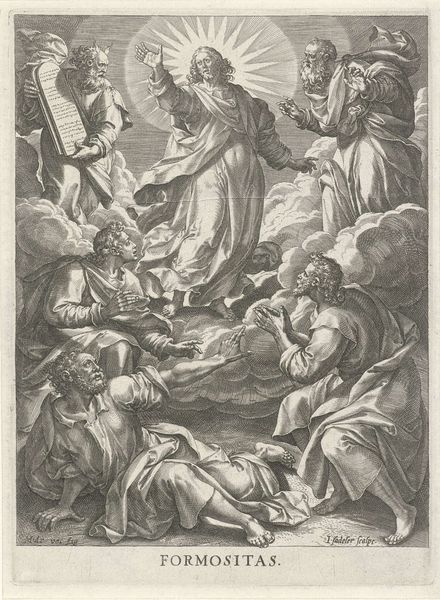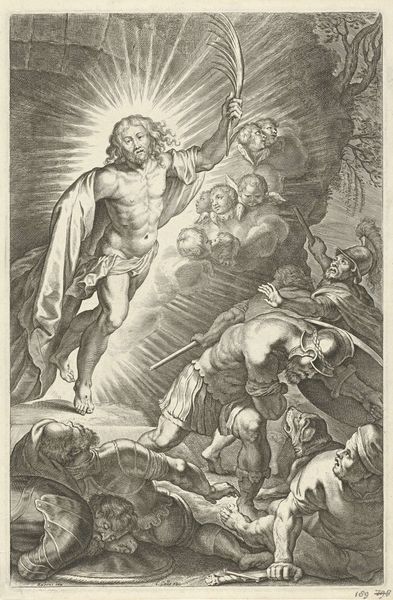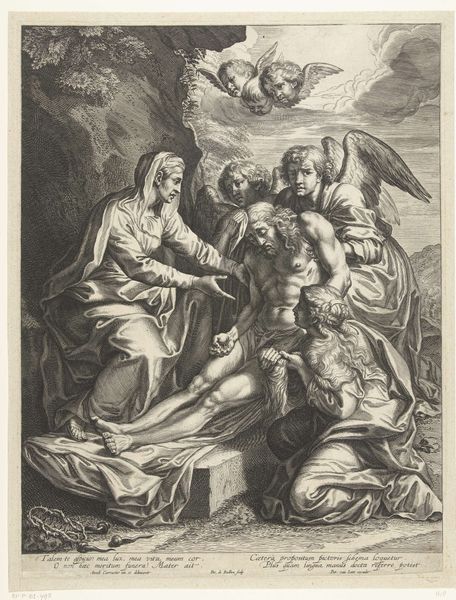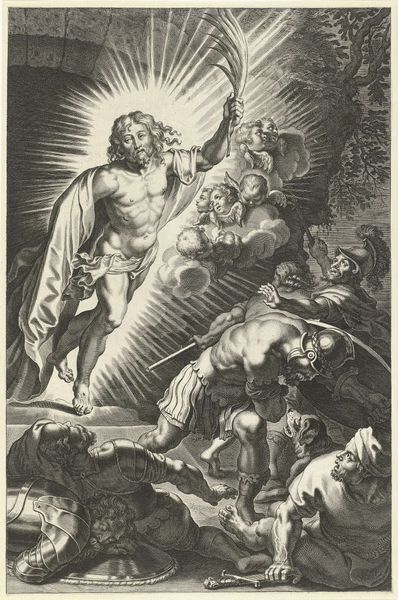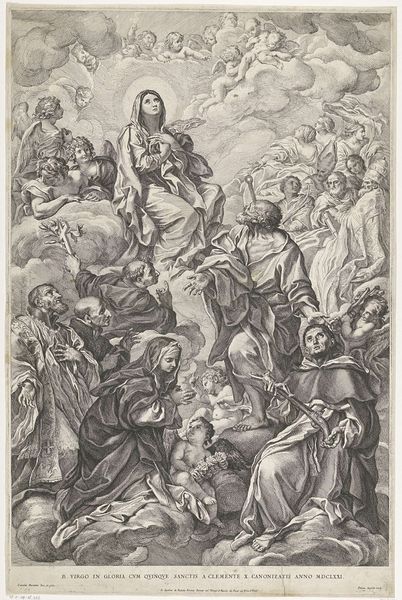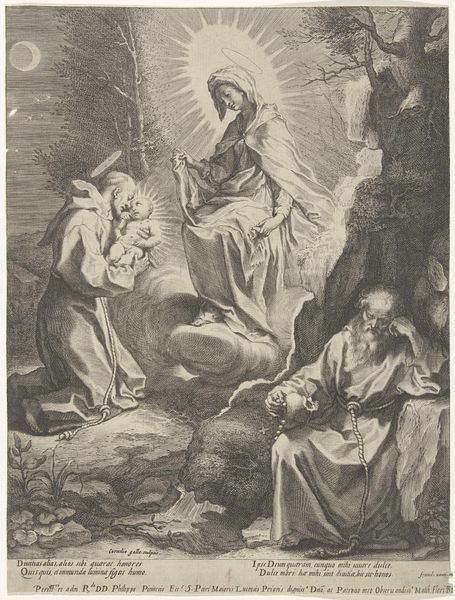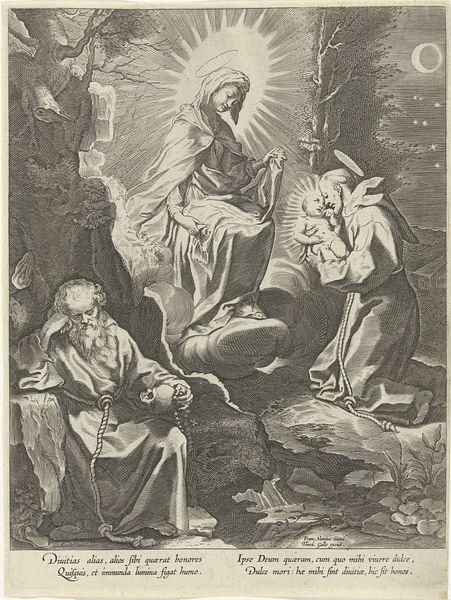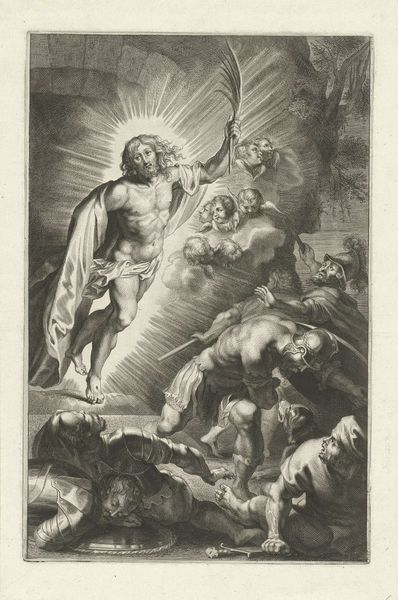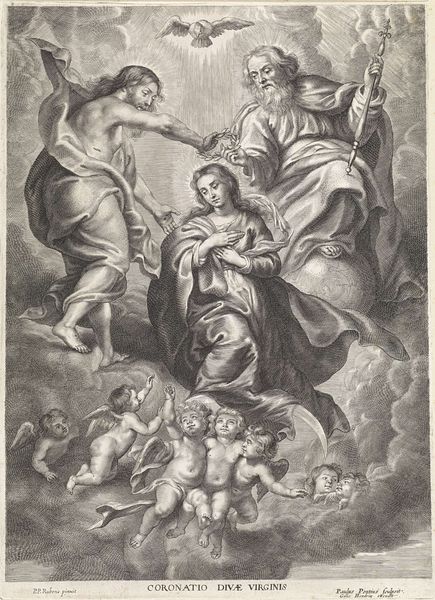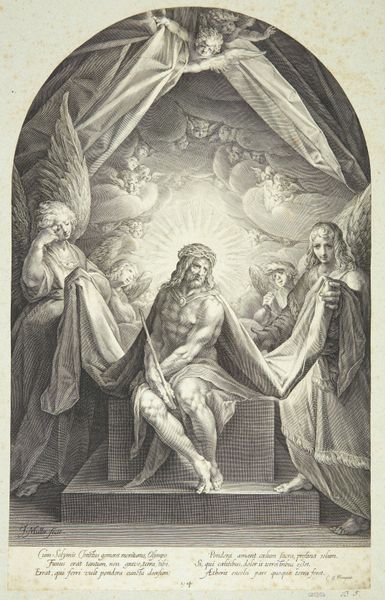
print, ink, pen, engraving
#
baroque
#
pen drawing
# print
#
pencil sketch
#
old engraving style
#
figuration
#
ink
#
pen-ink sketch
#
surrealism
#
pen work
#
pen
#
history-painting
#
engraving
#
pencil art
Dimensions: height 539 mm, width 380 mm
Copyright: Rijks Museum: Open Domain
Curator: This print, titled "Christus in de hof van Getsemane," depicts Christ in the Garden of Gethsemane. It was created sometime between 1639 and 1646 by Jeremias Falck. I am struck by the detail achieved through engraving; look at how finely the artist has captured emotion on the figure's face. Editor: It feels emotionally charged, doesn't it? The cascading light draws your eyes directly to Christ. I immediately focus on this radiant beam; it overwhelms what should be a dark, somber setting. It brings forward ideas about sacrifice and the divine made visual, though a slightly theatrical portrayal perhaps, especially with all the surrounding angelic figures and symbolic objects. Curator: Exactly! The surrounding visual program speaks volumes about how the period engaged with religion. The work itself mirrors institutional pressures shaping sacred imagery in the late Baroque, the role of the church looming. Observe, on the left, how humanity writhes in fear, in juxtaposition to the luminous presence above them; this seems an open invitation toward spiritual redemption by external powers. Editor: Absolutely. I see the angel with the cross offering a path toward the passion. Then, my eyes are drawn upward, where a flurry of putti seems to engage in playful gestures with objects of martyrdom—one with the nails, another carrying a crown, a ladder leading into the sky...It suggests that both human and divine realms intersect within a psychologically-intense event. These implements gain significance in reflecting later veneration practices tied up within the institution of Catholicism as a global culture, in much the same manner of reliquaries and religious theater that are meant to invoke awe and personal transformation. Curator: Considering Falck's other works, we can perceive how his artistry resonated in his lifetime. "Christus in de hof van Getsemane" illustrates just how artists, and art itself, acted as integral facets of 17th century European culture, deeply embedded in both institutional practice and personal belief. Editor: It really makes you wonder what these historical engravings will represent centuries from now and what visual conventions will evolve around such emotionally complex subject matter in religious settings.
Comments
No comments
Be the first to comment and join the conversation on the ultimate creative platform.

